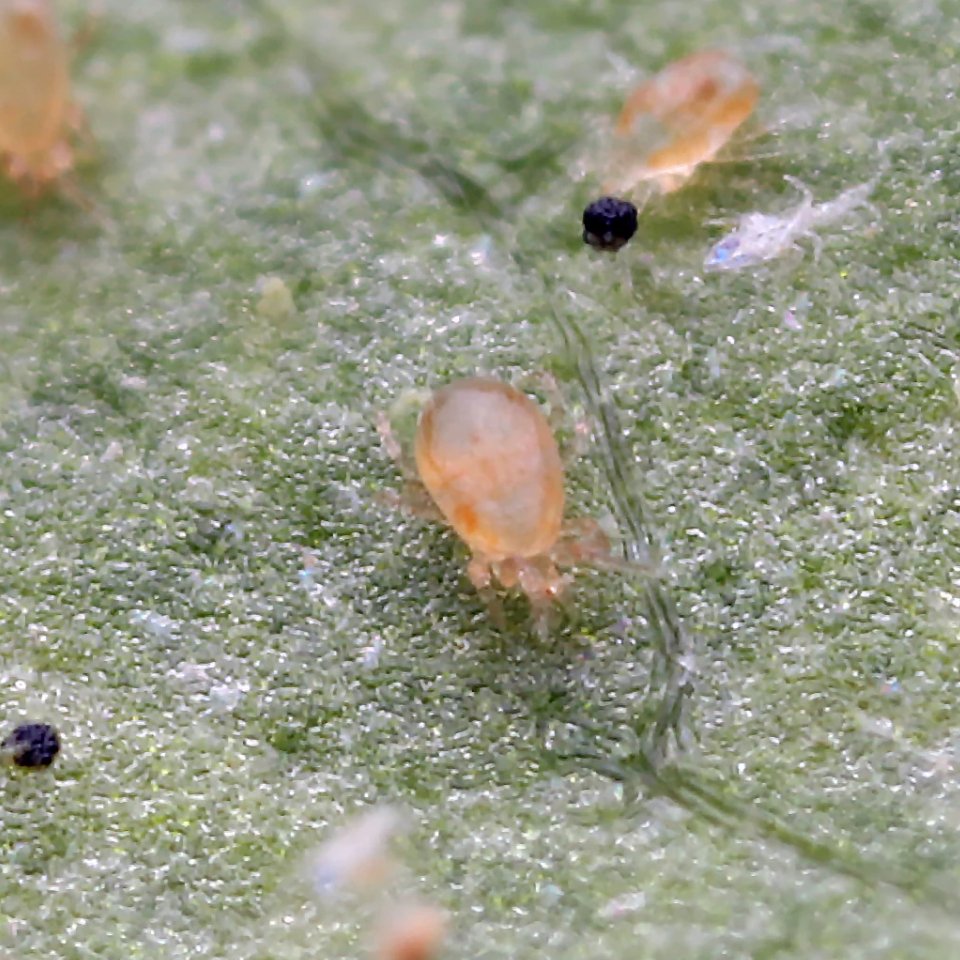
Neoseiulus (Amblyseius) Fallacis predatory mites
Mark AshworthShare
Neoseiulus fallacis are a microscopic Type II predatory mite, "cousin" to the Neoseiulus californicus, that feeds on several species of spider mites. They are widely distributed across North America, in the wild, and are used in commercial agriculture with great, long-term success.
Since the Neoseiulus fallacis is such a veracious predator of mites, their population is able to increase quickly (in relation to prey) and can overtake expanding populations effectively with the correct application rates. Further, because they are able to overwinter in soil and detritus, they are effective in living soil, greenhouse and indoor applications.
Identification:
Neoseiulus fallacis are only positively identified under magnification due to their resemblance to Galendomus Occidentalis and Neoseiulus californicus mites.

(Image Courtesy Biotactics, Inc)
Th adult mite, shown above, is 8-legged and pear shaped and will take on the color of the pest they have consumed (usually red/brown). The egg and larval stages are almost transparent colored, with the egg having a similar pear shape to the adult, just slightly smaller. The larvae stage of Neoseiulus fallacis is the only of its five life stages, where it has six legs.
We always recommend diversity, and predator mites are no exception. Check out our combo-packs of Neoseiulus fallacis and Galendomus Occidentalis
Purpose:
Neoseiulus fallacis mites are a strongly preferred, Type II predator mite in the agricultural industry especially when fighting European Red Spider Mites, Clover Mites, two-spotted spider mites and broad mites.
Their application is extremely effective in the springtime because they are more active at lower temperatures, where pest mites are slow and easy targets. Neoseiulus fallacis along with Stratiolaelaps scimitus (Hypoaspis miles) will both stay active at colder temperatures thus making them an excellent preventative measure together. Because they are able to overwinter in the soil and detritus layer, they are also regenerative in nature.
Life Cycle:
Adult Neoseiulus fallacis females will overwinter in the soil, becoming active when temperatures reach 55 degrees farenheit in the springtime. Each female with live for about 20 days, laying 40-60 eggs (shown below) on the underside of foliage. 
Each egg will hatch into a six-legged larvae and after a day it molts into its nymphal stages. Finally, roughly 5-6 days after the egg was laid, it will molt into an adult with 8-legs.
In summertime conditions, Neoseiulus fallacis are able to accomplish 6 or more generations before overwintering again.
Looking to get Neoseiulus fallacis into your garden, greenhouse or grow tent? Snag a sachet (Biopack) or Biovial here!
